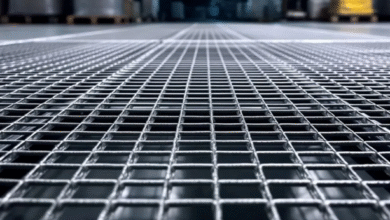Extending the Lifespan of Concrete Structures with Protective Coatings

Concrete is a durable and widely used construction material, but it isn’t immune to wear, corrosion, and environmental damage. Over time, exposure to moisture, chemicals, UV rays, and temperature fluctuations can lead to surface deterioration, cracks, and a weakening of structural integrity. Applying a concrete protective coating is one of the most effective ways to extend the life of these structures and minimize costly repairs.
Protective coatings form a barrier against external elements, helping concrete surfaces resist damage while preserving their appearance and strength. These coatings are particularly valuable for buildings, bridges, walkways, industrial flooring, and parking structures exposed to harsh conditions.
Barrier Protection Against Environmental Damage
Concrete surfaces are naturally porous, which allows water and other contaminants to penetrate over time. This leads to issues like rebar corrosion, freeze-thaw cracking, and surface erosion. Applying the right type of coating seals these pores, reducing permeability and improving resistance to chemical spills, water intrusion, and thermal stress.
Professionals often choose coatings based on the structure’s exposure level. For example, in industrial or coastal environments, higher-grade epoxy or polyurethane systems may be preferred due to their resistance to salt and chemical degradation. In milder climates, acrylic-based solutions can offer sufficient protection while enhancing the concrete’s appearance.
Understanding the advantages of specialty coatings for concrete, wood, and metal surfaces helps contractors and property managers choose the most effective treatment based on both environmental factors and project goals. These formulations are engineered for durability, adhesion, and longevity in specific applications.
See also: Beyond Borders: The Future of Cross-Border Business Expansion
Structural Benefits and Long-Term Savings
Protective coatings do more than improve aesthetics, they contribute to the structural longevity of concrete. By preventing early deterioration, coatings delay the need for resurfacing, patching, or total replacement. This translates to lower maintenance costs over time and fewer disruptions in service for commercial or public properties.
Surface coatings also improve traction and resistance to abrasion, making them ideal for floors, ramps, and walkways where safety is a concern. In warehouse settings or areas with heavy vehicle traffic, high-performance coatings reduce surface wear and increase load-bearing stability.
Selecting the right application method and product type is critical, especially when considering large-scale or high-traffic installations. Some field teams consult guidance on choosing the right striping machine, which can also apply to coating projects where precision in line work or floor demarcation is needed alongside protective layering.
Versatility Across Project Types
One of the key advantages of concrete coatings is their versatility. They can be used on vertical and horizontal surfaces, indoors or outdoors, and come in clear or pigmented options to support design goals. Coatings can also be layered for additional protection or performance characteristics, including anti-slip finishes, chemical resistance, or enhanced UV stability.
Proper surface preparation and skilled application are essential for maximum bond strength and durability. Even the best coating products will underperform if applied over unclean or unprimed surfaces.
Conclusion
Concrete structures endure constant stress from the environment, use, and time. Applying a concrete protective coating serves as a proactive solution to safeguard these surfaces, preserve their integrity, and extend their functional life. With the right system in place, property owners benefit from reduced repair costs, safer environments, and longer-lasting infrastructure. A well-maintained concrete surface not only performs better but also reflects a commitment to long-term structural health.




